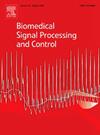Detection of intra-beat waves on ambulatory ECG using manifolds: An explainable deep learning approach
IF 4.9
2区 医学
Q1 ENGINEERING, BIOMEDICAL
引用次数: 0
Abstract
The development of wearable technologies for acquiring bioelectrical signals is expanding, increasing the demand for algorithms to analyze large clinical datasets. Accurate intra-beat waveform detection in ECG analysis is critical for assisting cardiologists in diagnosing cardiac diseases. We present a novel deep-learning detector capable of detecting specific intra-beat waves without the need for heartbeat identification, addressing a key limitation in current approaches. The model is trained to directly detect one of three key waveforms: P, QRS, or T. This approach is well-suited for applications such as identifying the T wave for repolarization alternans or ischemia. We employ a rigorous patient separation methodology and use a gold standard with expert manual labels from two public databases: QTDB and LUDB. The model utilizes a simple autoencoder (AE) architecture, offering interpretability insights by visualizing decision-making in a latent space. During the model design stage, the system achieves F1-scores of 0.93, 0.97, and 0.93 for P, QRS, and T wave identification. In real-world ambulatory environments, the in-line detector performs at 0.94, 0.98, and 0.96 for each wave. This work uses manifold learning for ECG intra-wave detection with simple, explainable models based on the applied machine learning principles. It outperforms state-of-the-art methods and provides valuable insights into the decision-making process, making it particularly well-suited for real-world applications, offering both accuracy and interpretability in ambulatory ECG analysis.
求助全文
约1分钟内获得全文
求助全文
来源期刊

Biomedical Signal Processing and Control
工程技术-工程:生物医学
CiteScore
9.80
自引率
13.70%
发文量
822
审稿时长
4 months
期刊介绍:
Biomedical Signal Processing and Control aims to provide a cross-disciplinary international forum for the interchange of information on research in the measurement and analysis of signals and images in clinical medicine and the biological sciences. Emphasis is placed on contributions dealing with the practical, applications-led research on the use of methods and devices in clinical diagnosis, patient monitoring and management.
Biomedical Signal Processing and Control reflects the main areas in which these methods are being used and developed at the interface of both engineering and clinical science. The scope of the journal is defined to include relevant review papers, technical notes, short communications and letters. Tutorial papers and special issues will also be published.
 求助内容:
求助内容: 应助结果提醒方式:
应助结果提醒方式:


